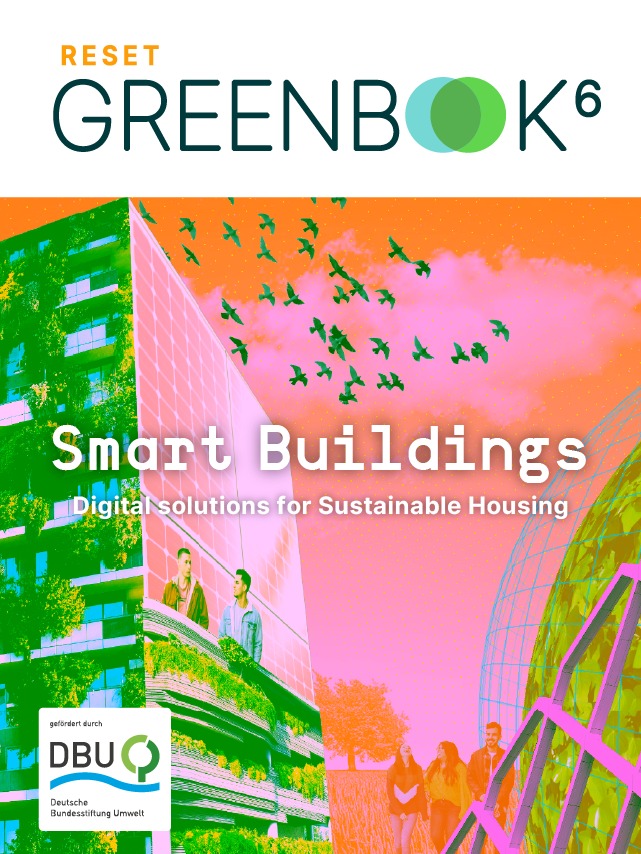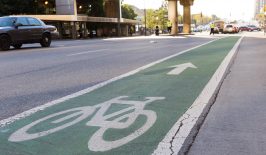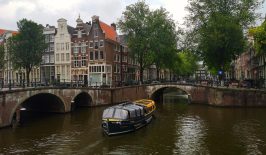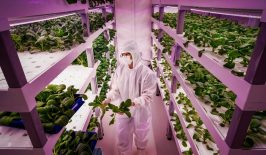A new type of “green wall” with a modular, simple to install design, a fully automatic irrigation system and much more – this is the result of a new European research project, and a promising step forward in much-needed urban adaptation to the challenges of climate change.
Improving and enhancing our green infrastructure (GI), in other words a network of natural and semi-natural green spaces, is becoming increasingly important in urban areas. With cities feeling the effects of climate change, increasing the amount of green space in our urban environments is seen as a key solution when it comes to both climate change mitigation and as an adaptation strategy. But in our ever more densely-packed cities, space is in in short supply. We need innovative new concepts to bring green into the city landscape – ways of integrating plants and trees into existing infrastructure, like roof gardens, green facades and walls.
The first-ever vertical garden or green wall systems are thought to have been developed by the Frenchman Patrick Blanc. While his main aims were artistic, today green walls tend to be installed in order to improve the surrounding urban microclimate. As well as having a cooling effect, green walls can help remove carbon dioxide from the atmosphere, purify the air and absorb sound. Walls covered in living plants also provide new habitats, for example as a nesting place for birds or as a food source for bees and other pollinating insects. But green wall installations don’t always succeed in the real world. Maintaining the plants isn’t always easy, especially when it comes to giving them the water that they need. And there are hurdles to overcome when installing them too, with the structures required often being heavy and cost-instensive.
An effective green wall system that’s easy to install
Green4Cities, a company which developed out of the University of Natural Resources and Applied Life Sciences in Vienna, has made it its mission to come up with a green wall design that is as accessible and easy to implement as possible. Within the framework of a three-year research project and with the help of EU Horizon 2020 funding, they were able to successfully develop their brand new concept, which they’re calling: LivingPANELS. RESET talked to Günther Frühwirt to find out more about it. Frühwirt is one of the two future managing directors of the start-up company NatureBASE, which is currently being founded and is set to emerge from Green4Cities with the panels as an initial product. According to him, the biggest technological innovation in the LivingPANELS green wall is the module, or “panel” itself, which makes up the heart of the living wall.
The LivingPANELS are made from a unique material that is designed to ensure the optimum supply of water and nutrients to the plants, which is also monitored by sensors. This keeps the water consumption as low as possible and means that the usual irrigation hoses are no longer required. The pre-grown green modules are designed to be attached to house walls with a simple sort of “plug and play” system, without the need for sophisticated tools. The designers also placed great importance on the use of light and resource-saving materials. And because the panels are a complete system, they can be mounted on both existing and new buildings. How do they hold up during cold winters? A lot of thought has been given to the choice of plants and al the properties of the substrate material base so that the long-lasting green modules should be able to survive the cold season well.
Buildings are a CO2 heavyweight: the construction, heating, cooling and disposal of our homes accounts for around 40 percent of Germany’s CO2 emissions. We will only achieve our climate goals if these emissions are massively reduced.
But how can we achieve the sustainable transformation of buildings and what role do digital solutions play in this? The RESET Greenbook provides answers: Building transformation – intelligently transforming houses and neighbourhoods.
So far, there are three test sites and two demo sites in Austria, Germany and Bulgaria, where the LivingPANELS have been extensively tested. The innovation is intended to counteract the urban heat island effect in particular, a phenomenon which is typically found in city centres, where due to dense building development the temperature is often several degrees higher nearby areas further out of town. In fact, the Greenpass software, which also originates from the Green4Cities project, confirms this: the perceived temperature on a hot day in the immediate vicinity of the facade is reduced by around 3 degrees when equipped with LivingPANELS. The temperature inside the building is a whole 8 degrees lower. The buildings feel cooler not only thanks to the transpiration of the dense carpet of plants, but also the special substrate’s high evaporation capacity.
Where vertical gardens meet artificial intelligence
Maintaining vertical gardens and green walls can be a costly undertaking. Automation technology could help streamline upkeep and maintenance, so the developers have built it into their innovation. According to Frühwirt, the technology they’ve built in includes sensors that help them control the irrigation system, carry out repairs and also detect errors and notify them in real time. It’s likely that artificial intelligence will play a greater role in the future: “We have worked out that applying traditional machine learning methods and deep neural networks has a huge positive impact on our project. That’s why we made sure during the data collection phase that it would be possible for us to do a machine analysis of the data using AI methods later on,” Frühwirt explains.
The plan is to implement the new green wall solution more broadly in spring 2021 and right now the team is working on preparing the LivingPANELS so they can soon go into series production. One of the great strengths of the panels is that they are an example of climate change adaptation – and mitigation – in one, and installing them has an immediate effect: “Since the surface of the LivingPANELS is completely greened immediately after installation and we do not have to wait for years for it to grow – as is the case with floor-bound solutions – the effectiveness is also significantly higher and faster”. Climbing plants, which are also often used for façade greening, have the disadvantage that they generally do not grow higher than 10 metres. If they die suddenly, there is no quick replacement. With planted modules, on the other hand, the solution is much more flexible, as small areas can easily be replaced if needed, as well as green modules offering a much higher degree of biological diversity.
While having a positive impact on the climate, this innovation in green wall technology is also set to improve the well-being of city dwellers, something which is becoming ever more relevant in light of increasingly frequent heat waves. The future managing director of NatureBASE is convinced that green infrastructure can only be successfully developed if cities involve their inhabitants in their implementation and appreciation. After all, when it comes to measures that make cities more climate-resilient, they often tend to make them more liveable for the people living in them too.
This is a translation of an original article that first appeared on RESET’s German-language site.









